1. Overview of Tien Phong Stone Communal House: A Special Heritage
Located in An Mong village, Tien Son ward, Ninh Binh province, Tien Phong Stone Communal House stands out with its three-story architecture featuring a main cylindrical structure made of solid blue stone. Besides its architectural significance, the communal house is also associated with the legend of the female general Nguyet Nga during the time of the Hai Ba Trung sisters. This place embodies historical values and traditional carving art, making it an ideal choice for those who love cultural heritage.
This rare architectural work using solid stone demonstrates the creativity and skillful hands of the ancients. Each carved detail on the bamboo-bud shaped stone pillars, from swirling dragons to lotus flowers, is linked to spiritual traditions. Tien Phong Stone Communal House is a symbol of the enduring spirit and patriotism of generations of Vietnamese people.
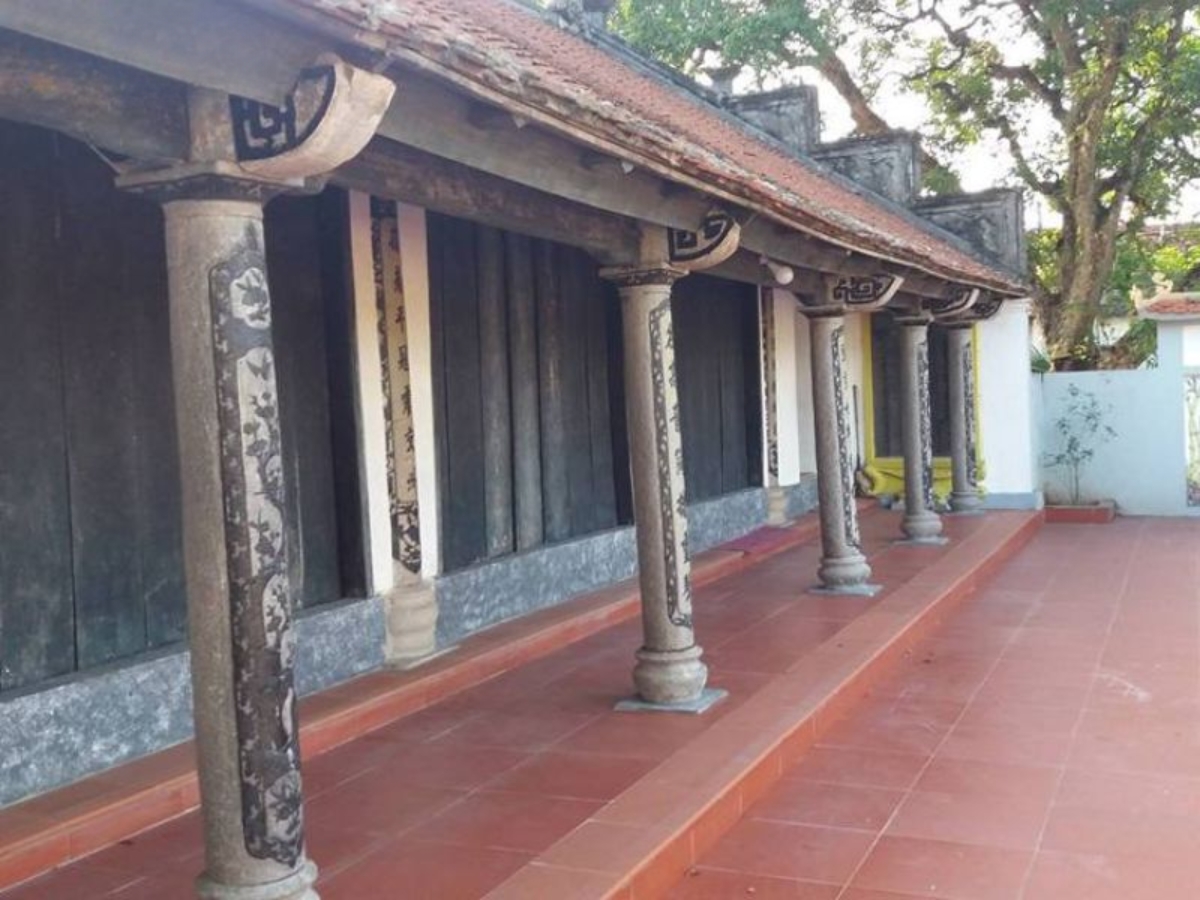
2. Directions to Tien Phong Stone Communal House
2.1. Moving from Hanoi to Tien Phong Stone Communal House
The distance from Hanoi center to Tien Phong Stone Communal House is about 60 km, with a travel time of approximately 1.5 to 2 hours depending on the route and traffic conditions. The most convenient route is via National Highway 1A or the Phap Van – Cau Gie Expressway, then travel from the Duy Tien – Dong Van interchange following the signs to Tien Phong commune, An Mong village.
Visitors can travel by private car for more flexibility and convenience in their itinerary. Alternatively, you can choose a bus on the Hanoi – Duy Tien route, combined with a taxi or motorbike taxi, to get closer to the communal house. Those who prefer to travel by motorbike will easily feel the purity and tranquility of the Northern Vietnamese countryside scenery on their journey.
2.2. Intra-provincial travel guide
If starting from cities like Phu Ly or Duy Tien, visitors can easily reach Tien Phong Stone Communal House by motorbike or local bus. The short distance and convenient roads help save travel time. During the early spring season, visitors should arrive early between 7 to 8 AM or after 2 PM to experience the tranquil atmosphere and avoid crowded times for worship.
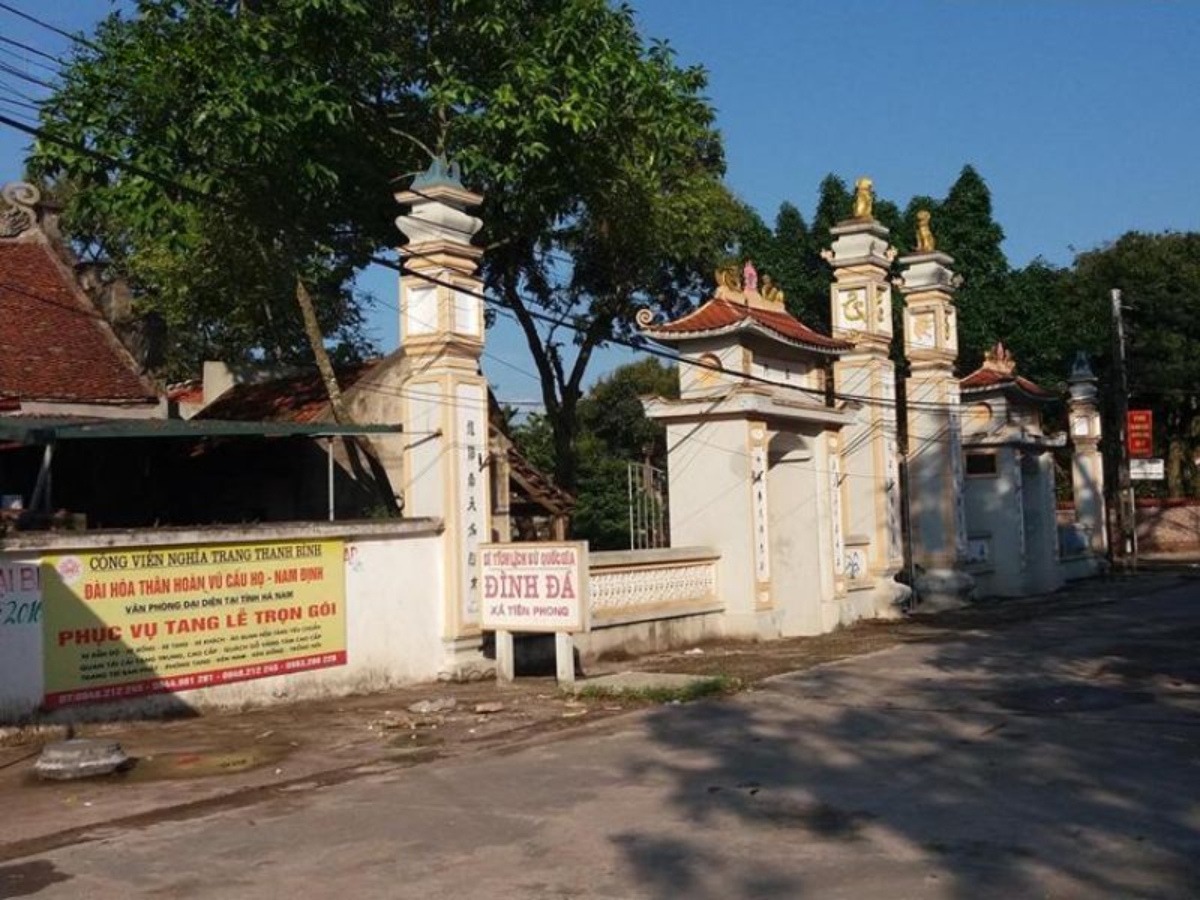
Entrance to Tien Phong Stone Temple - a national historical relic. (Source: Collected)
3. History of Formation and Milestones of Tien Phong Stone Temple
3.1. Address and Formation Process
Tien Phong Stone Temple was built in the 17th century on a riverbank alluvial plain, which is said to be the birthplace of Princess Nguyet Nga according to folk legend. Over time and due to the river's flow, the temple had to be relocated and was restored many times to preserve its value through generations.
The largest renovation during the Nguyen Dynasty in the early 19th century shaped the temple's architecture as it is today. Subsequent repair campaigns have all preserved the original monolithic stone character, ensuring the cultural and historical value of the relic is passed down to the present day.
3.2. Legend of Princess Nguyet Nga
Princess Nguyet Nga, a female general during the Hai Ba Trung uprising, is the deity worshipped at Tien Phong Stone Temple. According to legend, she was born in An Mong village, from a young age, she demonstrated military prowess and patriotism, in 40 AD, she participated in the uprising against the Han army, establishing a base to command the rebel forces with unwavering spirit.
After the uprising failed, the princess returned to her hometown and died by the Mong River. Moved by her fighting spirit and loyalty, the people built a temple to worship her. The legend preserves the image of a talented female general with a resilient spirit, while also reflecting the Vietnamese village community's tradition of gratitude.
3.3. Traditional Events and Festivals
The Stone Temple Festival is one of the important traditional festivals in An Mong village, Tien Phong commune, Duy Tien district, Ha Nam province. The festival is held annually to commemorate Princess Nguyet Nga, a talented female general during the Hai Ba Trung uprising.
The main festival takes place from the 6th to the 8th day of the first lunar month. Additionally, worship ceremonies and incense offerings are also held on Princess Nguyet Nga's birthday (the 15th of the 7th lunar month) and death anniversary (the 12th of the 10th lunar month). The main activities of the festival include worship ceremonies and palanquin processions, boat racing, and ball wrestling.
During the worship ceremony, the main officiant and assistants will offer incense and read prayers for abundant harvests and peaceful lives. Afterward, the altar is carried to the fields to plant a few rows of rice and mulberry cuttings, symbolizing the wish for a prosperous crop. The boat race takes place at the river junction, where it is said Princess Nguyet Nga met her end. The race features two large boats, each with 28 rowers. The winning team is the one that crosses the finish line first and grabs the ceremonial branch. The ball wrestling game is organized to commemorate Princess Nguyet Nga's military training. The ball wrestling here is similar to the one in Gừa village, but includes a special category for men over 50 years old.

The Stone Temple Festival takes place annually from the 6th to the 8th day of the first lunar month, attracting a large number of people from all over. (Source: Collected)
4. Unique Architecture of Dinh Da Tien Phong
4.1. Layout and Scale of the Entire Temple
The overall architecture of Dinh Da Tien Phong is built in the shape of the Chinese character 'gong' (工), a traditional temple layout of the North. The three large sections, including the front hall, the second hall, and the main hall, are arranged symmetrically, harmonizing yin and yang.
Surrounding the temple grounds are shady trees and an enclosing wall, contributing to a pure space, separate from the bustling life. The entrance features a stone triple-arched gate, intricately carved with dragon and phoenix motifs, adding a solemn touch, while being closely connected to the community life of the village.
4.2. Solid Stone Front Hall
The highlight of Dinh Da Tien Phong is the front hall constructed from solid stone – a very rare feature in village temples in the North. The 12 large main columns mimic the shape of budding leaves, with bulging bodies and tapering ends, possessing both artistic value and ensuring the structural integrity of the architectural complex.
On each stone column, ancient artisans meticulously carved traditional symbols such as coiled dragons symbolizing power, lotuses representing purity, and scenes of phoenixes and mythical creatures (long mã) symbolizing prosperity. Each carving is exquisite, demonstrating the skill and level of craftsmanship of the artisans of the past.
4.3. Traditional Interlocking Beam and Coffer System
The temple utilizes the characteristic traditional interlocking beam and coffer system of ancient village temples, skillfully applied to stone. The tightly connected structural system, without nails, relies on secure assembly, ensuring the structure's longevity. Dinh Da Tien Phong is a vivid testament to the creativity of the Vietnamese people in combining traditional techniques with special materials.
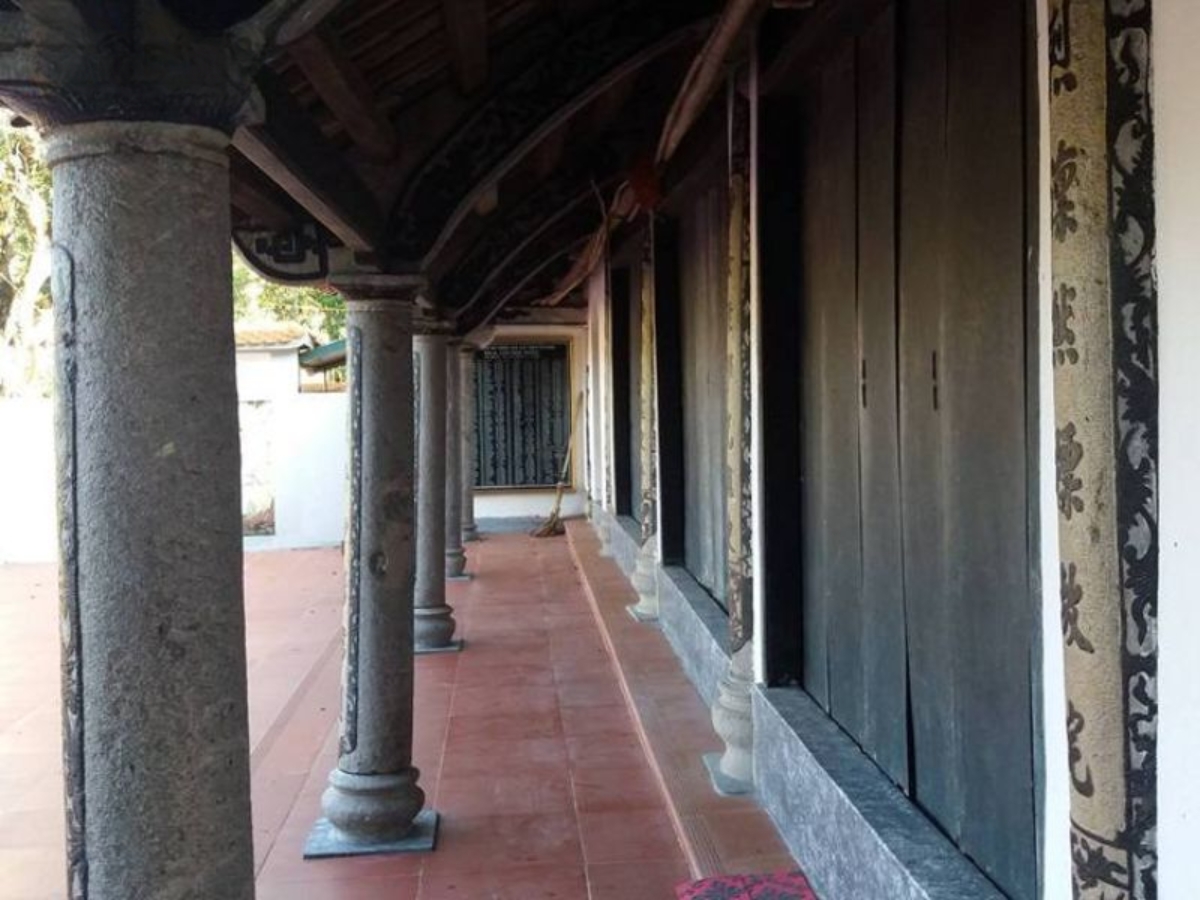
The front hall of the communal house is made from monolithic stone. (Source: Collected)
5. Stone Carving Art at Dinh Da Tien Phong
5.1. The Four Sacred Creatures Motif Representing Aspirations for Prosperity
The carved motifs at Dinh Da Tien Phong achieve a high level of sophistication, especially the four sacred creatures (dragon, unicorn, tortoise, phoenix), which appear vividly on the stone pillars and walls. The dragon carving is depicted with majestic lines and graceful curves, expressing power and good fortune, while the unicorn evokes a sense of stability and peace.
Additionally, interspersed motifs of lemon flowers, the character for longevity, and scenes of pine and deer convey wishes for health and prosperity. Each decorative detail not only serves to beautify but also contains feng shui meanings, conveying prayers for a prosperous and abundant life for the land and the local community.
5.2. Graceful Lines Expressed on Stone
The art of sculpture at Dinh Da Tien Phong demonstrates meticulousness and expressiveness. Every detail, from the main pillars to the porch columns, is meticulously crafted and exquisite.
The tall stone pillars are vivid artistic paintings. On them, you can see majestic images of dragons coiling in water, gracefully dancing phoenixes and mythical creatures, or charming lotus flowers. These motifs contain profound meanings, symbolizing power and prosperity.
The four sacred creatures motif (dragon, unicorn, tortoise, phoenix) is exquisitely carved, expressing the villagers' aspirations for good fortune and prosperity. What is astonishing is that despite being executed on stone, these lines still exude softness and vitality as if in motion, demonstrating the artisans' care and skilled craftsmanship.
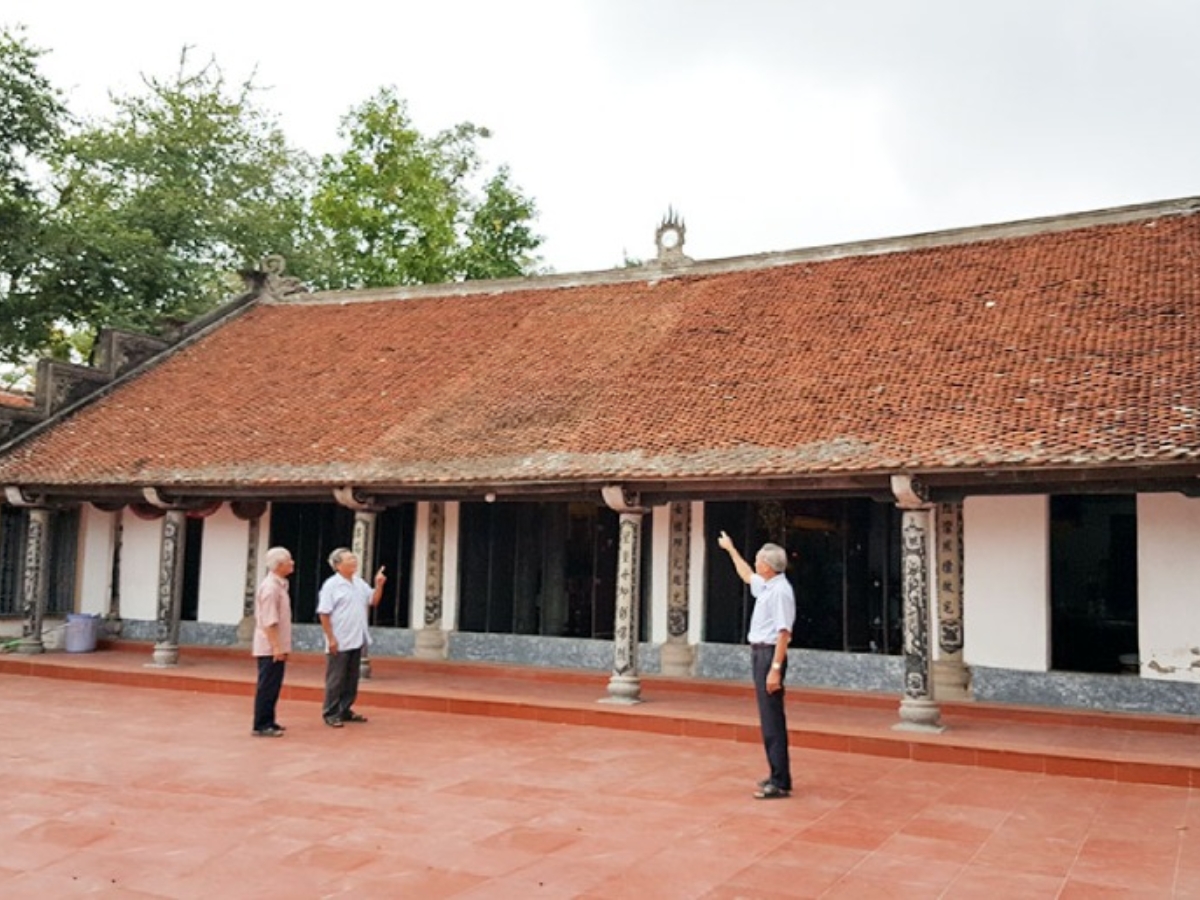
Exquisite sculptural art at Tien Phong Stone Communal House captivates visitors. (Source: Collected)
6. Valuable experiences at Tien Phong Stone Communal House
6.1. Center for local spiritual and community activities
Tien Phong Stone Communal House is an important center for spiritual and community activities for the local people. Not only are worship ceremonies held during major holidays like the full moon of the first lunar month and the traditional Tet holiday, but throughout the year, there are also frequent smaller festivals imbued with local traditions. Visitors have the opportunity to witness solemn rituals, expressing piety and the enduring spiritual beauty in daily life.
The sacred space of the communal house is always filled with a solemn atmosphere. The sound of bells echoes in the quiet space, wisps of incense smoke drift among the ancient stone pillars, leaving an unforgettable impression of Vietnamese spiritual culture in the hearts of every visitor.
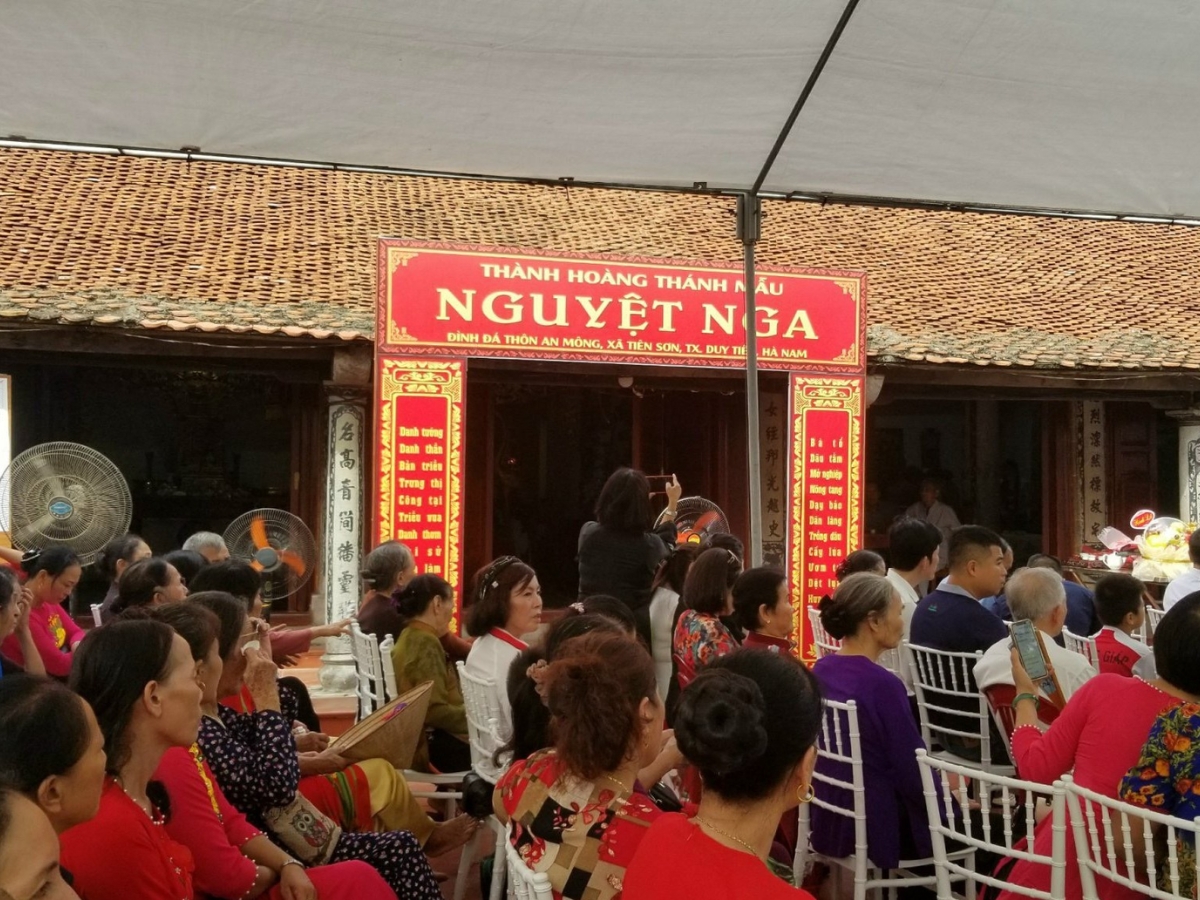
Tien Phong Stone Communal House is the center of spiritual activities for the people of An Mong village. (Source: Collected)
6.2. Learn about Stone Carving Art
Visiting Tien Phong Stone Communal House, visitors have the opportunity to learn more thoroughly about the unique stone carving art of Vietnamese people in the past. Each delicate detail reveals the secrets of the traditional craft – from material selection, processing to finishing. Art and history lovers can spend time admiring and exploring the techniques and meanings of patterns on each stone pillar, wall section, and relief.
The communal house also displays documents and reference materials about the stone working process, helping visitors fully understand the cultural and technical value and the context that formed this historical marvel.
6.3. Enjoy Traditional Dishes
The journey to Tien Phong Stone Communal House will be even more attractive if visitors enjoy local specialties prepared by the locals themselves. Banh cuon cha with its thin wrapper and soft, fragrant meat filling, Vu Dai village braised fish with its rich flavor, all carry the characteristic culinary culture of the Northern Delta region.
The festival season also adds dishes like mung bean sweet soup and phu the cake… Sitting together enjoying homeland cuisine amidst the ancient space of the village communal house evokes a sense of familiarity and creates a joyful, complete impression for a trip to explore spiritual heritage.
7. Detailed Guide to Visiting Tien Phong Stone Communal House
7.1. Notes for Visiting and Worshipping
The ideal time to visit Tien Phong Stone Communal House is in spring, especially during the early year festival season when the weather is cool and the festival atmosphere is bustling. Autumn with its gentle weather is also suitable for enjoying the peaceful countryside scenery. When visiting the communal house, visitors should pay attention to wearing polite and neat attire, avoiding overly revealing clothing when entering the place of worship.
During the visit, traditional regulations must be followed: maintain order, do not touch objects, artifacts, and statues. Visitors should prepare some offerings such as flowers and incense to offer before worshipping, showing reverence to the deities. Appropriate behavior and awareness of preserving the monument contribute to preserving common cultural values.
7.2. Photography Tips and Architectural Exploration
Ideal spots to capture beautiful moments at Tien Phong Stone Communal House include the facade with its chu cong architecture, detailed pillars with elaborate carvings, or lively tu linh reliefs. Early morning or late afternoon light creates a prominent effect for the carved stone lines. When taking photos in the worship area, visitors should limit the use of flash to maintain solemnity.
Visiting the communal house fits a half-day itinerary: morning for architectural sightseeing, noon for tasting local specialties, and the afternoon for a stroll around the village or visiting nearby relics. This way, you will have the opportunity to deeply feel the artistic value and rich cultural atmosphere of this heritage site.

Immerse yourself in the atmosphere of the stone temple festival at Tien Phong Stone Temple. (Source: Ha Nam TV)
8. Suggestions for combining a travel itinerary to Tien Phong Stone Temple with nearby attractions
A full day of experience should start with a visit to Tien Phong Stone Temple in the early morning, followed by Lang Giang Temple at noon, spend the afternoon exploring Tam Chuc Tourist Area, and end the day with a local market session, buying more local specialty gifts. This itinerary allows you to explore the diverse cultural and spiritual values and experience the peaceful nature of this land.
Around the temple, there are many traditional eateries with dishes such as banh cuon, river fish, free-range chicken at reasonable prices. Phu Ly banh cuon here is especially loved thanks to its thin crust and distinctive delicious taste. You can also choose handicrafts from the craft village to take home as souvenirs.
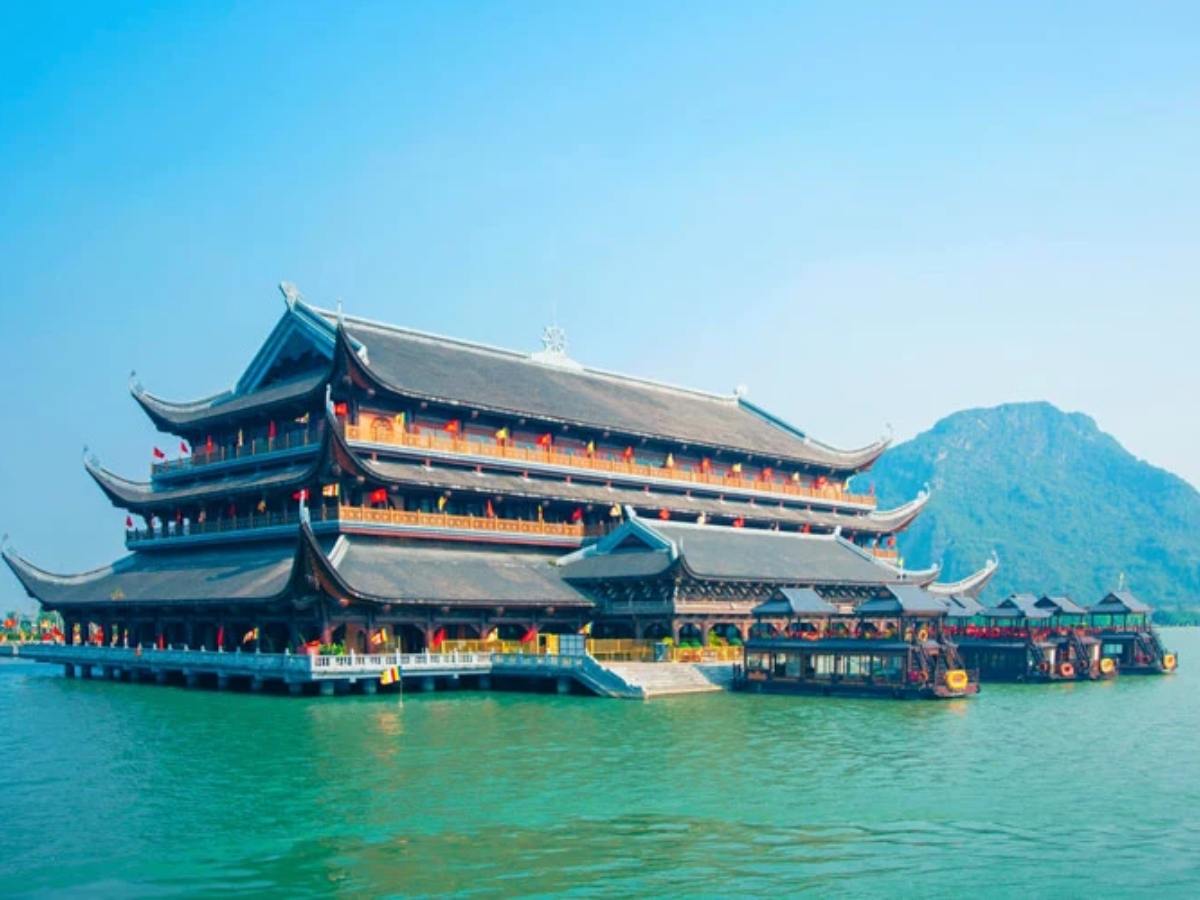
Beautiful scenery at Tam Chuc Tourist Area. (Source: Collected)
Tien Phong Stone Communal House is a precious monolithic stone architectural heritage, bearing the deep imprint of Vietnamese history and culture. This place preserves beautiful traditions, expressing gratitude and pride for those who have contributed to the homeland.
When visiting, you will feel the sacredness of the relic space, admire the unique architecture, and discover the distinctive traditional artistic values.

